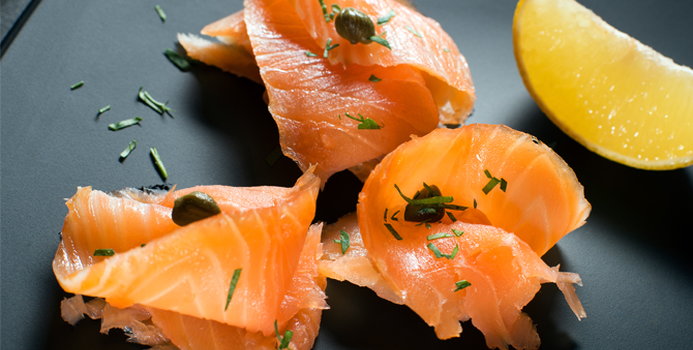To say that salmon is a popular food would be an understatement. A big reason for the popularity of the food has to do with the fact that a lot of health benefits are associated with it. Categorized as an oily kind of fish, salmon has flesh that is generally red to orange, though, more rarely, there are white-fleshed salmon which you can find in the wild. This famous and natural color of salmon is largely due to the carotenoid pigments which are found in the flesh. Salmon are generally found along the coasts of the Pacific Ocean as well as the North Atlantic; they have also been introduced in the Great Lakes region of North America. Salmon has been eaten as a way of shoring up the health of people for quite some time already.
Omega-3 Fatty Acids
The characteristic that sets salmon apart and makes it pretty desirable as far as health foods go is the high content of omega-3 fatty acids, which are beneficial to not only adults, but even children. You want to have more omega-3 fatty acids in your diet due to the heart benefits that it provides. Research has shown that omega-3 fatty acids can stave off heart disease and then even lessen the mortality rate among current heart attack survivors. One serving of ocean-caught, Atlantic salmon will already net you almost two grams of omega-3 fatty acids. This characteristic of omega-3 fatty acids is found in these high quantities only in another kind of fish, the mackerel, which has even more omega-3 fatty acids than does salmon.
Trans-Fatty Acids
Trans-fatty acids, put simply, are deleterious for your body. They are connected to LDL cholesterol, which is branded as the bad kind of cholesterol. As if that wasn't enough, trans-fatty acids also reduce the good kind of cholesterol, called HDL cholesterol, which just heightens the risk of people succumbing to either stroke or heart disease. Trans-fatty acids have been linked to Type 2 Diabetes. Salmon is very low in these toxic types of acids, which is great, considering that in 2003, the FDA actually recommended that Americans' daily intake of trans-fatty acids be as low as possible. If you want salmon that is truly low in trans-fatty acids, though, you must be sure to buy the ocean-caught kind of salmon, as processed salmon is still relatively higher in trans-fatty acids.
Calories
If you have not been sold on salmon's nutritional value just from the above mentions of omega-3 fatty acids and trans-fatty acids, then consider how low in calories salmon is. In just one serving of salmon, you get only 183 calories; to put that into perspective, both chicken and beef have higher calorie counts per single serving, as do other forms of fish. Adding more ocean-caught salmon into your diet is an effective way of lowering your caloric consumption.



